|
The year 2021 started off with so much promise. COVID vaccines had just become available and Joe Biden was about to become President. But the optimism of the new year was shattered for me on January 6th with the Capitol riot. This led to another impeachment of Donald Trump, ongoing Congressional investigations, and a widening of the partisan divide. Even with the occasional rays of sunlight shining through the fog of COVID, the dark clouds were never far away. But the year wasn’t all bad, and if you were smart enough to tune out the news and social media banter, you may be in a pretty good place right now. Job prospects have rarely looked better, the economy is doing well, despite the spike in inflation, and many of us are spending more time outdoors and with family and friends. It is actually raining in much of California as I write this, and the record Sierra snowpack for December brings much needed drought relief. The good news often gets overshadowed by the bad. My New Year’s resolution is to focus more on the good and turn down the volume on all the negativity and bad news. The change-over from one year to the next is a time of renewal, and gives us hope that things will be better in the future. It is also a time for reflection of the year just past and for the prospects that a new year may bring. This blog is about some of the biggest stories of 2021 and my reflections upon them. COVID and Vaccines: The COVID pandemic continued to dominate headlines and our lives throughout 2021. All Americans ages 16 and above became eligible to receive a COVID vaccine starting on April 19, 2021.That was the month that I got vaccinated and was happy to drive 120 miles and stand in line for two hours to receive my first shot. Children ages 12-15 became eligible for the Pfizer vaccine in May. This brought a lot of optimism and it seemed as if the country was emerging from darkness into the light. But the virus had other ideas with the emergence of the Delta variant, which became the predominate variant in the U.S. by the end of June. The Delta variant caused more infections and spread faster than previous variants. The vaccines proved less effective at preventing infection from the new variant, but they remained highly effective at preventing hospitalizations and deaths. In late October the FDA authorized the use of the Pfizer vaccine in children ages 5-11. All of the approved COVID vaccines lose effectiveness over time. Booster doses are required as immunity diminishes. In October the FDA authorized the use of booster doses for all adults, six months following the 2nd shot of the Pfizer or Moderna vaccine, and two months following the J+J vaccine. At the start of 2022, Pfizer booster shots were authorized for children ages 12-15, and the waiting period changed from six months to five for all recipients. It is now clear that a full vaccine regimen includes the initial shots plus the booster. The CDC should begin using the term “full vaccination” to mean the initial shots plus the booster, and eliminate the word “booster” altogether. It is confusing, and gives the impression that the booster shot is optional and not part of the full vaccine regimen. The Omicron variant was first detected in the U.S. on December 1st, and by the end of the month was the dominant variant. It arrived just in time to disrupt holiday plans here and around the world. It appears to spread at a rate 2-3 times faster than Delta and has resulted in a surge in hospitalizations. The final week of December saw an average daily infection rate of nearly 400,000. The actual total is probably much higher, since many people with breakthrough cases don’t seek medical attention. There is a silver lining here. According to studies from South Africa and Britain, the Omicron variant appears milder and is far less likely to result in hospitalization than any other variant. Research suggests that Omicron is less damaging to the lungs than Delta, and is mainly limited to the nose, throat, and windpipe, https://www.theguardian.com/world/2022/jan/02/new-studies-reinforce-belief-that-omicron-is-less-likely-to-damage-lungs. We should never forget that COVID vaccines have been a huge success. According to the CDC, unvaccinated people are ten times as likely to become hospitalized and ten times as likely to die from COVID as vaccinated people. Even though the cases of breakthrough infections have increased due to the highly infectious Omicron variant, the vast majority of people getting seriously ill and dying from COVID are the unvaccinated. To date, approximately 63% of the U.S. population is vaccinated, but only about 30% of the vaccinated adults have received a booster shot. There are millions of Americans who have not been vaccinated, and billions are yet to be vaccinated around the world. This leaves a lot of hosts for new COVID variants to emerge. For this pandemic to end, more people need to get vaccinated, and wearing appropriate face masks in public should become routine. Capitol Riot: The work of the House Select Committee investigating the January 6th attack on the U.S. Capitol is far from over. The committee is likely to release an interim report by the summer and a final report sometime this fall. I hope that the thoroughness of the investigation and the timing of the final report’s release is not influenced by the mid-term elections. Meanwhile, Federal prosecutors are busy conducting investigations of individuals who may have been criminally involved in the January 6th riot. To date, more than 725 people have been charged with various crimes pertaining to their activities in the Capitol on that day. Earlier this month a new law was passed which grants the Capitol Police Chief the power to unilaterally request emergency backup from the National Guard and federal law enforcement agencies. This legislation will allow the Capitol Police to react more swiftly to emergencies. It shouldn’t have taken such a massive breach in our Capitol’s security for a bill of this type to be enacted. I guess it takes a crisis for anything to get through Congress on a bipartisan basis. President Biden’s Legislative Agenda: President Biden’s triumphs were overshadowed by his failure to pass his massive “Build Back Better” social agenda by the end of the year. His job approval ratings ran as high as 55% near the start of his presidency, but have sunk to the low 40s by the end of the year. In March, the President signed into law the $1.9 Trillion “American Rescue Plan”. This was a big victory for the President. It provided much needed funding to fight the COVID pandemic, and it provided economic stimulus to states, counties, cities and families. The other major legislative victory for the President was the passage of the $1.2 Trillion “Infrastructure Investment and Jobs Act” in November. This important piece of legislation was passed on a bipartisan basis, which is no small achievement. But the Democrats were not content to end the spending spree there, and the progressive wing of the party pushed the President to move forward with his multi-trillion dollar “Build Back Better” social spending plan. This backfired on the President when a few moderate Democrats in the Senate pushed back due to the price tag. The plan is not dead, but it will be scaled back and will consume a lot of energy as the politicos turn their attention to the mid-term elections. I think that the President overplayed his hand with “Build Back Better”. As several others have remarked, nobody elected Joe Biden to be FDR, they elected him to be moderate and stop the chaos. The Democrats have very slim margins in the House and the Senate. There is no mandate to get big progressive bills through Congress. Joe Biden should have known better. Economy: The economy came roaring back in 2021 due to pent up demand and trillions of dollars from stimulus programs. But as everyone has experienced, inflation has reared its ugly head. Consumer prices rose by 5.7% in November from a year earlier. Anyone who has purchased gasoline, groceries, and household goods in recent months has felt the pinch. Housing prices, automobiles and electronics have also seen significant price increases over the past year. Initially the economists thought the inflation would be transitory due to COVID related supply chain disruptions. But with low unemployment rates fueling wage increases, inflation is not going to be so easy to tame. The Federal Reserve is poised to step in and end its bond purchasing program, and begin to increase interest rates in the new year. End of the Afghanistan War: The U.S. completed its evacuation of all U.S. military troops from Afghanistan on August 31, 2021, marking the end of the twenty-year war. Any good that resulted from the war was overshadowed by the collapse of the U.S. backed government and the rapid disintegration of the Afghan military, which allowed the Taliban to regain control of Afghanistan. Today Afghanistan is facing an economic and humanitarian crisis. Billions of dollars of the country’s assets are frozen in the U.S, and most international aid has stopped. Despite pledges to the contrary, the Taliban has reverted to its repressive policies of the past. Severe restrictions have been placed on women, and many democratic institutions have been dismantled. The U.S. military’s chaotic exit from Afghanistan and the rapid takeover by the Taliban will be used against the Democrats in the midterm elections and beyond. I still believe that it was the right decision for the U.S. to exit Afghanistan. But President Biden’s much heralded foreign policy expertise and his knowledge of the situation, came up woefully short. Mike Pence is the Unsung Hero of the Year: Yes, Mike Pence, the former vice president! Mike Pence was Donald Trump’s last hope against the certification of the 2020 Presidential election. All of the dozens of legal challenges to the outcome of the election filed on behalf of Trump, failed in court or were tossed out. Trump had been convinced, falsely, by his lawyers and consultants that the vice president had the constitutional authority to prevent the certification of the electoral votes due to potential voter fraud. Pence could decertify those votes he disagreed with and send them back to the states. Friendly state legislatures would then send back to Congress a new slate of electors in favor of Donald Trump, giving him the electoral victory. Mike Pence was under tremendous pressure by the President and his lawyers and consultants, to enact the plan to decertify the election. For his part, Mike Pence consulted Congressional colleagues, constitutional experts, and a former vice president on the matter. Pence was rightly convinced that he had no constitutional authority to do anything other than to count the electoral votes already certified by the individual states. Critics of Mike Pence said that he was just doing his job. Sure, but if Pence had gone along with the President and failed to do his job, this country would have been thrown into a constitutional crisis which would have caused irreparable harm to our democracy. Mike Pence also paid a big personal price for defying President Trump. He damaged his standing with the Republican base, and his prospects for the White House have vanished. Donald Trump could not have hoped for a more loyal vice president than Mike Pence, and what does he get as a reward? He is thrown under the bus by Donald Trump who turns him into the villain of the Republican Party. This episode shows the true character of Donald Trump. He demands loyalty from others, but he gives none in return. Contrast this to the character of Mike Pence who refused to be evacuated from the Capitol on January 6th as Trump loyalists stormed the building shouting “Hang Mike Pence”. Mike Pence did not leave the Capitol until Joe Biden was certified as the winner of the 2020 Presidential election. That was an historic moment for our country, and if not for Mike Pence this country would never be the same. The Most Important Story You Might Have Missed: The Associated Press conducted an exhaustive review of every potential case of voter fraud in the six battleground states disputed by former President Donald Trump, https://apnews.com/article/joe-biden-arizona-donald-trump-voter-registration-tucson-c64bba90b8c074bf8bdfd2c751b6b0f2. The review took place over several months, involving over 300 local election offices in the key battleground states of Arizona, Georgia, Michigan, Nevada, Pennsylvania and Wisconsin. Of the 25.5 million ballots cast for president in these states, less than 475 proved to be fraudulent. Even if all 475 of these votes were removed from Joe Biden’s tally, it would have had zero impact on the outcome of the election. Every one of those fraudulent votes was cast by an individual acting alone. There was no collusion to rig the election and no wide-spread voter fraud. Donald Trump’s “Big Lie” is just that; a big lie. There were a lot of big stories that I didn’t comment on, such as voting rights, abortion, and Joe Manchin’s clash with the President. But these stories will be with us in the new year, and there will be plenty of time to comment on them as they continue to develop. Most of the big news out of 2021 didn’t have much in the “feel good” department. Many of us have COVID fatigue, so it’s easy to overlook the good that occurred. The pandemic will end, and most of us will get through it unscathed, although not unchanged. If nothing else, we will learn to appreciate what is truly important: family, friends and good health.
If you enjoy reading this type of commentary please subscribe to my blog and tell a friend. You will receive an email notification when new blogs are posted. The email will come from the site’s email: armchairamerican1776 @gmail.com. Thanks, Armchair American
0 Comments
Since August the CDC has recommended that people with moderately to severely compromised immune systems receive an additional dose of the Pfizer or Moderna COVID-19 vaccine. Last Friday the CDC authorized a booster shot of the Pfizer vaccine to certain groups of people six months after receiving the first two doses. This applies only to those who have received the Pfizer vaccine. Earlier in the week the FDA and the CDC’s advisory committee on vaccines both recommended a third dose of the Pfizer vaccine, but differed on who should be eligible. CDC director Rochelle Walensky overruled her advisory committee to align with the recommendations of the FDA. CDC’s new guidelines on who should get a booster shot of the Pfizer vaccine six months after receiving the 2nd shot:
CDC’s new guidelines on who may receive a booster of the Pfizer vaccine:
These recommendations are very broad, which makes it a fairly simple matter for anyone intent on getting a booster to get one. Already in the U.S. people are lining up for boosters. But this is where the ugly issue of vaccine inequity comes into play. As of mid-September, fewer than 4% of Africans have been fully vaccinated. African leaders at the United Nations last week, along with the World Health Organization, pleaded with the developed countries to delay boosters until poor nations received their first doses. There is no question that the supply of vaccines worldwide is limited, and the poor nations are scrambling for initial doses, while people in rich nations are already receiving booster doses. Most health experts agree that booster vaccines will not stop the pandemic. Getting unvaccinated people vaccinated will. People who have been fully vaccinated against COVID-19 have a high degree of immunity and are very well protected against serious illness and death. The focus needs to be on the unvaccinated populations across the globe. Booster doses should be targeted for a very select group of people, such as the immunocompromised and the elderly with underlying health conditions. The United States needs to do a better job at vaccinating the 25% of the population eligible for vaccines who have not yet received one. Rather than spending vast resources on giving boosters shots, the U.S. needs to focus on the unvaccinated and start ramping up for getting children ages 5-11 vaccinated. Emergency Authorization for this age group is only weeks away. Approval for Moderna’s COVID-19 booster vaccine is only days away from receiving approval, but J&J has not yet submitted an application for its booster. For most people who have been fully vaccinated against COVID-19, it is probably more important to go out and get a flu vaccine, and not a booster dose of the Pfizer vaccine. Reference Link: https://www.cdc.gov/coronavirus/2019-ncov/vaccines/booster-shot.html If you enjoy reading this type of commentary please subscribe to my blog and tell a friend. You will receive an email notification when new blogs are posted. The email will come from the site’s email: armchairamerican1776 @gmail.com.
Thanks, Armchair American On August 23, 2021, the Food and Drug Administration (FDA) granted full approval to the Pfizer/BioNTech COVID-19 vaccine for people age 16 and older. This vaccine had been authorized for emergency use since December 11th for people age 16 and older. In May the emergency use authorization was expanded to include children age 12-15, which still remains in effect. Of the approximately 170 million Americans who are fully vaccinated, about 54% received the Pfizer vaccine. The approval comes 97 days after Pfizer provided the FDA with over 340,000 pages of documents to support their application. The FDA had reportedly been working on the application around the clock, and the approval took about half the time that it normally does. Now that the Pfizer vaccine has received the FDA’s gold standard for safety, effectiveness, and manufacturing quality, will it provide the impetus for vaccine holdouts to get vaccinated? What are the other implications of the Pfizer vaccine approval, and what about the other COVID-19 vaccines? Vaccine Holdouts: Public health officials are hopeful that the FDA approval of Pfizer’s vaccine will motivate more people to get the vaccine. As of August 23rd, there were approximately 82 million eligible Americans who had not yet received a COVID vaccine, for a variety of different reasons. According to the Kaiser Family Foundation, 3 in 10 unvaccinated adults said that they would be more likely to get vaccinated if one of the vaccines were to receive full FDA approval, https://www.kff.org/coronavirus-covid-19/poll-finding/kff-covid-19-vaccine-monitor-june-2021/. This is certainly encouraging, but only time will tell. It has been known for some time that a major reason for vaccine hesitancy is due to the notion that COVID vaccines are “experimental”. The FDA approval of the Pfizer vaccine takes this excuse off the table. Vaccine Mandates: Mandating a vaccine that had not received full FDA approval was problematic from a legal and ethical standpoint. But that has all changed. On the same day that the Pfizer vaccine received full FDA approval the Pentagon announced that it would require all active-duty service members to be vaccinated. Many large employers, school districts, universities, and other public and private entities have also announced vaccine mandates in recent days. Many organizations and municipalities have tried to increase vaccination rates by offering prizes and giveaways, with limited success. Mandates might help to push some people who are still on the fence about getting vaccinated. Other Implications of Full FDA Approval:
Booster Shots are Coming: The Biden Administration prematurely announced that starting September 20, 2021 booster shots would become available for adults eight months after their second shot of either the Moderna or Pfizer COVID vaccine. But before this can happen each vaccine manufacturer needs to receive FDA approval to provide boosters for their particular vaccine. To date only Pfizer has provided the FDA with initial data to justify a booster shot. Pfizer plans to submit its full application within days to provide boosters to people age 16 and older. Moderna and Johnson & Johnson will submit their data later this fall. Approval for boosters is not a matter of if, but when. The data coming in is overwhelmingly positive. This week Pfizer released data showing a third dose given 5-8 months after the second dose resulted in a 3- fold increase in coronavirus fighting antibodies, https://www.reuters.com/world/us/pfizer-starts-process-seek-us-approval-covid-19-vaccine-booster-2021-08-25/. Data coming out of South Africa shows a 9-fold increase in antibodies from a booster dose of the Johnson & Johnson vaccine given 6 months after the first, https://www.cnn.com/2021/08/25/health/johnson-vaccine-booster-data/index.html. If you can’t wait for the FDA to officially sanction booster shots, simply ask your personal physician. If you have been fully vaccinated with the Pfizer vaccine, your physician may legally provide a third dose now that it has received full FDA approval. Vaccine Inequity: Not everyone is happy about the U.S. and other developed countries rolling out booster shots. The head of the World Health Organization called the strategy “a mockery of vaccine equity”. With only about 2% of the African population fully vaccinated, I tend to agree. We have seen how contagious the delta variant is. Unvaccinated people are the incubators of new coronavirus variants, which could one day overcome the protection offered by current vaccines. The full FDA approval of the Pfizer vaccine is a good thing. It legitimizes this important weapon against COVID-19, which is still rampaging through the world. It eliminates the stigma of being “experimental” used by many as an excuse for not getting vaccinated. FDA approval provides legal cover for businesses, organizations and schools to mandate COVID vaccines when they deem it necessary. In the weeks and months ahead, Moderna and Johnson & Johnson will be submitting applications for full FDA approval for their vaccines. COVID vaccines have saved countless lives and have been used safely in hundreds of millions of people around the world. Full FDA approval of these vital vaccines can’t come soon enough. Here is a link to the FDA press release on the full authorization of the Pfizer COVID vaccine, https://www.fda.gov/news-events/press-announcements/fda-approves-first-covid-19-vaccine. If you enjoy reading this type of commentary please subscribe to my blog and tell a friend. You will receive an email notification when new blogs are posted. The email will come from the site’s email: armchairamerican1776 @gmail.com.
Thanks, Armchair American The World Health Organization has identified vaccine hesitancy as a leading global health threat, which left unchecked could lengthen the duration of the COVID-19 pandemic. The United States is far ahead of most nations in vaccinating its population. But even the Centers for Disease Control and Prevention recognizes that reaching herd immunity is no longer a realistic goal. The best hope to mitigate the consequences of the pandemic is to get as many people as possible vaccinated, within the shortest period of time. President Biden has a goal of getting at least 70% of the adults in the U.S. vaccinated with at least one shot by the 4th of July. This should be achievable, but it won’t be easy. To date about 64% of adults have received at least one COVID shot. But the pool of adults willing and able to get vaccinated is shrinking. Lack of access and misinformation are leading to vaccine hesitancy and outright refusal to get the shot. Lack of access to the vaccine in certain populations is a big challenge, but one that can be overcome with time and resources. Reaching the homeless, migrant workers, shut-ins, and isolated rural communities present logistical challenges. The more difficult challenge will be to overcome all the misinformation out there and get through to those refusing to get vaccinated. Who is Hesitant about Getting Vaccinated: The Kaiser Family Foundation COVID-19 vaccine tracking poll tracks vaccination rates and behavioral attitudes towards vaccinations among various demographic groups, https://www.kff.org/coronavirus-covid-19/dashboard/kff-covid-19-vaccine-monitor-dashboard/?gclid=EAIaIQobChMI_qiK1aGI8QIVIPHjBx2Ejw5SEAAYAiAAEgJt2fD_BwE. Here is some of the latest data on adult vaccination rates in the U.S.:
The people in the last two groups, making up 20% of the adult population in the U.S., are considered “hesitant” about getting the vaccine. This hesitant group tends to be younger, Republican, and from rural communities. Here is the breakdown for these groups: Group Hesitant or Outright Skeptical Ages 30-49 28% Republicans 36% From Rural Areas 27% The most significant determinant among all groups, including race and gender, was the level of education. Working class members of every demographic group are less likely to be vaccinated and are hesitant to do so. People with a college degree are twice as likely to be vaccinated than those without a degree. Nearly 25% of all adults without a college degree fall into the vaccine hesitancy group. People in the “wait and see” group tend to be the young and people of color. Reasons for Vaccine Hesitancy: To overcome vaccine hesitancy it is important to understand the root causes. The predominate cause is misinformation, but here is a partial list of other reasons.
Overcoming Vaccine Hesitancy
Here are some other messaging points put together by Sherita Hill Golden, MD, Professor of Medicine at Johns Hopkins, to assist in overcoming vaccine misinformation:
Consequences of Not Getting Vaccinated
Getting a COVID-19 vaccine is a very personal choice, and although I believe that most adults should get vaccinated, it should not be forced upon them. There are some very legitimate reasons for some people not to get vaccinated, such as deeply held religious beliefs and some underlying medical conditions. For the benefit of the community, the country and the world, all people eligible to receive the vaccine should, for the common good. There was a strong consistent message when the polio vaccine was introduced in the 1950s. It gained widespread acceptance under the banner “we’re all in this together”. Will this message resonate in our polarized world? Let’s hope and pray that it does.
Update July 13,2021: The pandemic is far from over, but you wouldn’t know it by walking down the streets of most American cities. The world recently surpassed the grim milestone of 4,000,000 deaths due to COVID-19. This was the official death toll, but the actual death toll is certainly much higher. Approximately 25% of the world’s adult population has received at least one shot of COVID-19 vaccine, mostly in the rich countries. Less than 1% of the adults in low- income countries (Africa, Asia, South America, Central America) have received a single shot of the vaccine. On June 15th the U.S. surpassed 600,000 deaths due to COVID-19, and the death rate continues to climb, mainly among those who have been unvaccinated. President Biden missed his July 4th goal of getting 70% of eligible adults vaccinated with at least one shot. As of this writing just under 68% of adults have received at least one shot. COVID-19 cases have come down significantly in the U.S. over the past few months due to the highly effective vaccines. As a result, most areas of the country have dropped all COVID-19 related restrictions. Mask mandates, social gathering restrictions, and indoor business restrictions have disappeared, and domestic travel has returned with a vengeance. But this rosy picture hides vast geographic disparities which show a significant rise in hospitalization rates and deaths due to COVID-19 in regions with low vaccination rates. Rural areas, which tend to be conservative, have seen a recent rise in COVID-19 cases. Low vaccination rates make these populations vulnerable to the highly contagious Delta variant. Arkansas and Missouri are seeing the worst outbreaks, followed by Florida, Nevada, Wyoming, and Utah. But unvaccinated people are driving increases in COVID-19 cases even in areas with high vaccination rates. This corresponds with the lowering (or elimination) of COVID restrictions and the emergence of the Delta variant. I live in a county north of San Francisco, where 68% of eligible people are fully vaccinated and another 8% are partially vaccinated. But there has been a troubling uptick in COVID-19 cases and hospitalizations, even before the full effects of 4th of July gatherings are felt. The vast majority of the hospitalized COVID-19 patients are unvaccinated. Contact tracing has shown that most of the current COVID-19 cases in my county are being fueled by social gatherings and leisure time activities, with the highest rates in the 18-32 age group. Vaccine hesitancy continues to align significantly with party affiliation. According to a recent Washington Post-ABC News poll, 6% of Democrats said they are not likely to get vaccinated, compared with 47% of Republicans, including 38% of Republicans who said they definitely will not get the vaccine https://www.washingtonpost.com/politics/post-abc-poll-biden/2021/07/03/54e95b6e-db43-11eb-8fb8-aea56b785b00_story.html. First detected in India, the Delta variant is estimated to be 60% more transmissible than earlier variants. The Delta variant has rapidly spread around the globe and is currently driving COVID-19 outbreaks in African, Asia, Australia and South America. The CDC has determined that the Delta variant is now dominant in the U.S. and is spreading rapidly in unvaccinated populations. Researchers in France, Israel and Britain have shown that a single dose of the Pfizer or AstraZeneca vaccine is largely ineffective against the Delta variant. Therefore, delaying the second shot in order to vaccinate more people is no longer an effective option. New variants, like the Lambda variant spreading rapidly in South America, provide more reason to quicken the pace of vaccination around the world. The unvaccinated population provides a breeding ground for new variants, and short of shutting down the world, vaccines are our only real defense. Pfizer made news last week by announcing that it would seek FDA approval for a COVID-19 booster vaccine. The CDC and NIH strongly rejected the need for vaccine boosters at this time, refuting the claims made by Pfizer. But many in the scientific community acknowledge that it is not a matter of if, but when booster shots will be needed. Preliminary research out of Israel suggests that the Pfizer vaccine is less effective against the Delta variant and there is a decline in antibody levels against the virus over time. I think that we should be prepared for the eventuality of booster shots, but we need to think through the ethical issues involved. Is it ethical to provide booster shots to fully vaccinated people in wealthy countries when the vast majority of people in poorer countries remain unvaccinated? Israel plans to offer booster shots of the Pfizer vaccine to adults with weakened immune systems, and Britain has announced plans to provide booster shots to its vulnerable populations and front-line workers. It makes sense to protect our most vulnerable, but it seems premature to do so when there is a limited supply of vaccines. The FDA warned this week that the Johnson & Johnson COVID-19 vaccine can lead to an increased risk of Guillain-Barré syndrome, a rare neurological condition. The incidence is very rare, and the benefits of this highly effective vaccine outweigh the risks. But I fear that this warning from the FDA will further diminish the acceptance of this much needed vaccine. The vast majority of hospitalizations and deaths due to COVID-19 are occurring in unvaccinated people. The evidence is overwhelming. Unvaccinated people pose a risk to themselves and to vulnerable populations who have been vaccinated. No vaccine is 100% effective and breakthrough infections do occur. The incidence of COVID-19 is eleven times higher in unvaccinated people than vaccinated ones. If that isn’t an incentive to get vaccinated, I don’t know what is. Encourage everyone you know to get vaccinated. Regarding the use of face masks, do like I do, don’t leave home without one. If you enjoy reading this type of commentary please subscribe to my blog and tell a friend. You will receive an email notification when new blogs are posted. The email will come from the site’s email: armchairamerican1776 @gmail.com. Thanks, Armchair American It has been over two months since my last BLOG on COVID-19 vaccines. Since that time millions of people in several different countries have been vaccinated, new vaccines have been approved for use, and new virus variants have emerged. This blog is about the latest developments on the COVID-19 vaccine front. Johnson & Johnson (J&J) Vaccine: The J&J vaccine was given Emergency Use Authorization by the F.D.A. on February 27, 2021. According to Johnson & Johnson’s press release, the vaccine was 72% effective at preventing moderate to severe COVID-19 infections in the U.S. (https://www.jnj.com/johnson-johnson-announces-single-shot-janssen-covid-19-vaccine-candidate-met-primary-endpoints-in-interim-analysis-of-its-phase-3-ensemble-trial). What this means is the vaccine prevented all illness, including mild symptoms, in 72% of the recipients of the vaccine. This may sound disappointing in comparison to the 94-95% efficacy of the Pfizer-BioNTech and Moderna vaccines, but it was highly effective at limiting serious disease. J&J’s vaccine was 85% effective overall at preventing serious illness across all regions that it studied (U.S., Argentina, Brazil, Chile, Columbia, Mexico, Peru, and South Africa). More importantly, the vaccine demonstrated complete protection against COVID-19 related hospitalizations and deaths, the true benchmarks of the success of this vaccine. The vaccine had an overall efficacy rate of 64% against the more virulent South African strain, but an 82% rate against serious illness. It is important to note that the J&J trials were conducted when more variants were circulating in the population than when the Pfizer-BioNTech and Moderna trials were being conducted. This could account for the reduced efficacy being reported in the U.S. and elsewhere. Here are the key attributes of this new vaccine:
The J&J vaccine is a breakthrough. It doesn’t need sophisticated freezers for transport and storage, making it accessible to remote and underserved areas, as well as in second and third world countries. The fact that it is effective after a single dose makes it a great choice when scheduling a second shot is problematic, such as in homeless populations, the homebound, migrant farm workers, and hard to reach populations around the world. If I was the vaccine czar, the J&J vaccine would be reserved for these vulnerable populations. Pfizer-BioNTech Vaccine: On February 12, 2021, Pfizer-BioNTech announced that the U.S. government had exercised its option to purchase an additional 100 million doses of their vaccine. This brings the total number of doses to be supplied to the U.S. to 300 million, enough for 150 million people. Here are some recent developments:
Moderna Vaccine: On February 11, 2021 Moderna announced that the U.S. government had agreed to purchase an additional 100 million doses of its vaccine. This brings the total confirmed order commitment to 300 million doses, enough to fully vaccinate 150 million Americans. Moderna is on track to deliver the first 100 million doses in the first quarter of 2021, the next 100 million in the second quarter, and the new order of 100 million doses by the end of July 2021. Even without any new vaccines becoming available, the U.S. now has enough contracted vaccines to cover all of its eligible citizens, and then some. Here are some recent developments:
AstraZeneca/University of Oxford Vaccine: This vaccine was first approved for emergency use in the United Kingdom on December 30, 2020 for individuals 18 years of age and older. The vaccine requires a two-dose regimen, with an interval of between four and twelve weeks between doses. There has been some debate about the actual efficacy of the vaccine, with ranges from 62-82%. But clinical trials in the United Kingdom have shown the vaccine to be safe and highly effective at reducing hospitalizations and deaths. Because of the confusion over some of the reported data, the U.S. is conducting a trial of its own. Approval in the U.S. may still be a few months away. The vaccine can be transported and stored at normal refrigeration temperatures (36-46°F) for at least six months, making it a good candidate for use in 2nd and 3rd world countries. Here are some recent developments:
Novavax: On January 28, 2021, Novavax announced that its vaccine demonstrated 89% efficacy in a Phase 3 clinical trial conducted in the United Kingdom (https://ir.novavax.com/news-releases/news-release-details/novavax-covid-19-vaccine-demonstrates-893-efficacy-uk-phase-3). Preliminary studies suggest that it is very effective at preventing severe disease from the South African strain of COVID-19. Phase 3 clinical trials are underway in Mexico and the U.S. and should be concluded by the end of March. The vaccine requires two-doses, but doesn’t require the strict storage requirements of the Pfizer-BioNTech or Moderna vaccines. In September Novavax entered into an agreement with a major Indian vaccine manufacturer that could produce up to 2 billion doses per year. The U.S. has an agreement to purchase up to 110 million doses, with most of the remaining doses going to the COVAX Alliance. Look for this vaccine to be approved for use in the second half of 2021. There are currently 71 COVID-19 vaccines in clinical trials on humans, 20 of these have reached large scale Phase 3 trials around the world. In addition to the five vaccines that I detailed above, China has two vaccines it has approved for use, Russia has one vaccine, as does India. Virus Variants: The longer the novel coronavirus circulates, the more people that become infected, giving the virus opportunities to mutate into more dangerous variants. Any new variant has the potential of being more contagious, result in more severe illness, and be resistant to currently available vaccines. This is why it is so important to speed up the rate of vaccinations and to continue safe practices, until herd immunity is reached. Widespread testing for COVID-19 is very important to monitor the development and spread of new variants. Here are some of the new variants which have recently been identified:
Vaccine Equity: As of this writing approximately 240 million doses of vaccine have been administered around the world (https://www.cnn.com/interactive/2021/health/global-covid-vaccinations/). According to the United Nations, ten countries administered 75% of all vaccines, and 130 countries have yet to receive a single dose. The COVAX Alliance, led by the World Health Organization, is working with rich countries to provide vaccines to poor ones. But it is off to a slow start. COVAX delivered its first shipment of 600,000 doses of the AstraZeneca vaccine to Ghana on February 24, 2021. Ghana is one of 190 countries which have signed up to receive vaccines through the alliance. The COVAX Alliance currently has agreements with AstraZeneca and Novavax for COVID-19 vaccines, but the numbers are far short of what is needed. It is important to remember that no one is immune from COVID-19 until we are all immune. What We Still Don’t Know: We are a year into this pandemic, vaccines have only been available in limited supply for about two months, and there are a lot of unanswered questions. Once vaccinated, are people still able to spread the virus? Once vaccinated, how long will immunity last? If you had COVID-19, how long does immunity last? When will herd immunity be reached? Well, this is the real question, and we all need to be patient.
As of today, about 14.6% of the U.S. population has received at least one shot of vaccine, and a tiny fraction of the world’s population has been vaccinated. It is important to get vaccinated when it is your turn, but it is also important to continue to wear your face mask, practice social distancing and continue using good hygiene. We can't afford to let our guard down now that there is light at the end of the tunnel. We won't know that herd immunity has been reached until new cases of COVID-19 infections are rare. The speed with which the various COVID-19 vaccines have been developed and gotten into peoples’ arms is truly remarkable. All of the vaccines currently available in the U.S. are highly effective at minimizing serious illness and death. Coronaviruses have been circulating within the human population for centuries, and the coronavirus that causes COVID-19 will be with us for a long time. The sooner that the majority of the world’s population becomes vaccinated, the sooner the pandemic will be over, and the quicker we will all return to a semblance of “normalcy”. If you enjoy reading this type of commentary please subscribe to my blog and tell a friend. You will receive an email notification when new blogs are posted. The email will come from the site’s email: armchairamerican1776 @gmail.com. Thanks, Armchair American Joy to the world, the vaccines have come. Let earth begin to heal. Let's thank those who delivered them; let every arm prepare for one; and heaven and nature sing, and heaven and nature sing, and heaven and heaven, and nature sing. Is this a Christmas miracle? Let’s not get ahead of ourselves. This is still 2020 after all, and we have a long road ahead. The two COVID-19 vaccines currently in limited distribution were developed in record time, but the development of the technologies behind the vaccines took decades. Let’s look at the two vaccines currently being distributed and what to expect in the coming months. Operation Warp Speed (OWS): A public-private partnership initiated by the U.S. government to facilitate and accelerate the development, manufacturing, and distribution of COVID-19 vaccines, therapeutics, and diagnostics (https://www.hhs.gov/coronavirus/explaining-operation-warp-speed/index.html). This is an interagency program spearheaded by the Department of Health and Human Services. The main goal of this program is to produce and deliver 300 million doses of safe and effective vaccines, with the initial doses available by 2021. So far so good. The Chief Operating Officer of the program is General Gustave Perna, and the Chief Scientific Advisor is Moncef Slaoui. In August, OWS chose six companies to receive funding in order to expedite development and manufacture of COVID-19 vaccines. These companies are Johnson & Johnson, Moderna, Astra Zeneca/University of Oxford, Novavax, Merck, and Sanofi/GlaxoSmith Kline. Pfizer/BioNTech did not receive any direct funding from OWS, but has agreed to supply vaccines. Pfizer/BioNTech COVID-19 Vaccine: This vaccine was given Emergency Use Authorization (EUA) by the FDA on December 11, 2020. This is not the same as a full FDA approval, but it allows the vaccine to be used because there is sufficient evidence to show that its potential benefits outweigh its risks. Nearly 3 million doses of vaccine were delivered over the last ten days to 636 sites across the U.S. An additional 3 million doses will be delivered over the next few weeks to complete the required two dose regimen. Twenty to thirty million doses will be delivered each month in the first quarter of 2021. The first vaccines began to be administered to frontline healthcare workers on December 14, 2020. The vaccine was developed in Germany by BioNTech using mRNA technology (https://www.cdc.gov/coronavirus/2019-ncov/vaccines/different-vaccines/mrna.html). BioNTech has partnered with Pfizer to help fund, manufacture, and distribute the vaccine. OWS has contracted with Pfizer to purchase 100 million doses of the vaccine for $1.95 billion. Pfizer will produce about 1.3 billion doses of the vaccine in 2021 to be distributed around the world. The U.S. government is currently negotiating with Pfizer for an additional 100 million doses of vaccine, but Pfizer lacks the required raw materials. The government is considering using the Defense Production Act to speed up production of the needed materials. In an interview with CNBC, Pfizer CEO Albert Bourla said he would welcome the U.S. government’s help in procuring needed materials in order to increase production of the vaccine. This just in: Today (12/23), Pfizer and BioNTech have signed a $2 billion agreement with the U.S. government for the purchase of an additional 100 million doses of COVID-19 vaccine. At least 70 million doses will be delivered by June 30, 2020, and the remaining 30 millions doses will be delivered no later than July 31, 2020. What You Need to Know About the Pfizer Vaccine:
You can find more information on the Emergency Use Authorization of the Pfizer Covid-19 vaccine at: (https://www.fda.gov/media/144414/download). Moderna COVID-19 Vaccine: This vaccine was given Emergency Use Authorization by the FDA on December 18, 2020. The FDA stated that its analysis “supported a favorable profile”, and confirmed Moderna’s earlier assessment that its vaccine was 94.1% effective. Administration of this vaccine began on December 21, 2020. The Moderna vaccine is roughly equivalent to the Pfizer vaccine, both of which use synthetic messenger RNA technology. Moderna is a small biotech company based in Cambridge, Massachusetts, and the vaccine is the first product it has brought to market. Moderna will rely on contract manufacturers, such as Catalent Biologics in Indiana, to package and distribute their product. They plan to produce 500 million doses in 2021. Unlike Pfizer, Moderna has worked closely with Operation Warp Speed. The vaccine was developed in partnership with the National Institute of Allergy and Infectious Diseases, under-written by the government. Last summer the government signed a contract to purchase 100 million doses of the vaccine to be delivered in the first quarter of 2021. Earlier this month the government signed another agreement to purchase an additional 100 million doses to be delivered by the end of the 2nd quarter. This brings the government’s investment in the Moderna vaccine to $4.1 billion. What You Need to Know About the Moderna Vaccine:
You can find more information on the Emergency Use Authorization of the Moderna Covid-19 vaccine at: (https://www.modernatx.com/covid19vaccine-eua/). Other COVID-19 Vaccines on the Horizon in the U.S.:
Vaccine Distribution: Operation Warp Speed is coordinating distribution of all vaccines. It is allocating vaccines according to each state’s population. The CDC has established guidelines to aid the states in prioritizing the limited supply of vaccines. The individual states have the final say on how the vaccines will be distributed, but most states will follow the CDC guidelines. The highest priority (Phase 1a) will be frontline healthcare workers and older people and staff in residential care homes. The CDC just released new guidelines for people in the next priority group (Phase 1b). This group includes people 75 and older, and frontline workers in “essential” jobs. These essential workers include teachers, emergency workers, and people who work in grocery stores, prisons, food processing plants, and public transportation. It will probably take most of the 1st quarter of 2021 to vaccinate this group of people, assuming no supply disruptions. The next group (Phase 1c) will be people aged 65-74, and younger people with high- risk health conditions. Even if we wanted to vaccinate everyone sooner, the supply just isn’t there. Phase I alone will use most of the vaccines currently contracted for through Operation Warp Speed. The country will need at least one more approved vaccine to get all of the general public vaccinated by the end of the summer. The National Governors Association and Duke University have developed a website to help navigate the vaccine distribution across the country. For your state’s specific plan follow this link: (https://healthpolicy.duke.edu/news/covid-19-vaccination-plans-state). The CDC has established the “Pharmacy Partnership for Long-Term Care” to offer onsite COVID-19 vaccination services for residents and staff of nursing homes and assisted living facilities. The participating pharmacies include CVS, Walgreens, and Managed Health Care Associates. How Much Will the Vaccine Cost?: The federal government (tax payers) is paying for the vaccine. Healthcare providers may charge an administration fee, but in most cases this will be covered by medical insurance. Will Vaccination be Mandatory?: At this time vaccination is voluntary. It would be legally questionable to mandate vaccination with a product that has not received full FDA approval. But it is likely that there will be travel restrictions put in place requiring people to be vaccinated before flying or entering certain foreign countries. Will the Vaccines be Effective Against New Virus Variants: According to HHS officials and reports from Pfizer and Moderna, there is a high level of confidence that existing vaccines will be effective against new COVID variants, such as the one in the United Kingdom(UK). Moderna and Pfizer will conduct tests on the UK variant in the coming weeks to make certain that their vaccines are effective. Challenges Remain:
Vigilance and Patience: It will take most of 2021 to get the majority of the eligible people in the U.S. vaccinated against COVID-19. This is a massive effort and hiccups are bound to happen. We all just need to be patient. While we wait for herd immunity to be achieved, which could be many months to years away, we need to continue to protect ourselves, our families, and communities against the virus. This means that mask wearing, social distancing, and hand sanitation are as important as ever. Even after people become vaccinated, they may still shed the virus, so we must remain vigilant. New information about the coronavirus, COVID-19, and vaccines is coming out daily, so stay informed. The vaccines currently available, and those in development, give us hope for 2021. The efforts behind these vaccines demonstrate what can be accomplished when thousands of people in the public and private sectors come together in common cause for the betterment of humanity. The true Christmas miracle would be if this becomes a trend, and people come together to solve intractable problems like homelessness, poverty, hunger, racial injustice, the failed healthcare system, etc., etc., etc. One can only wish; and here’s wishing you a Merry Christmas. If you enjoy reading this type of commentary please subscribe to my blog and tell a friend. You will receive an email notification when new blogs are posted. The email will come from the site’s email: armchairamerican1776 @gmail.com.
Thanks, Armchair American |
AuthorThe Armchair American. Archives
November 2024
Categories
All
|



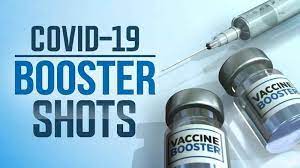



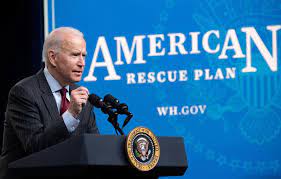



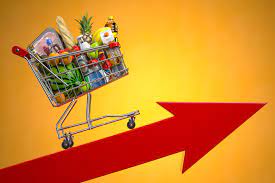








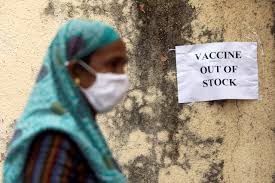




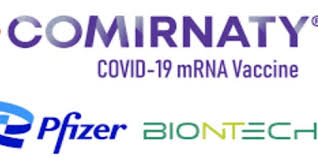




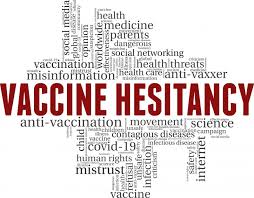



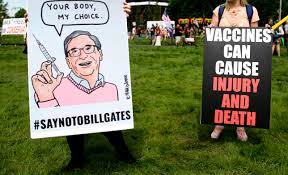
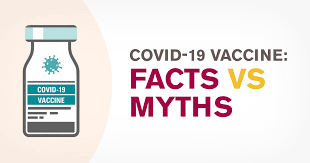


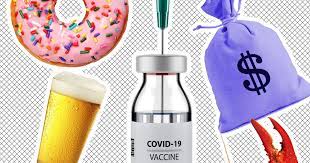

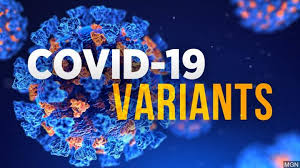
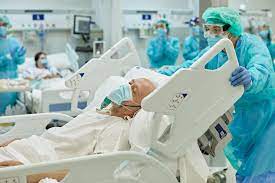



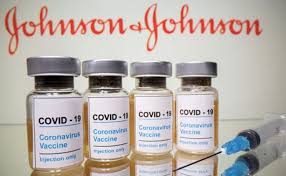



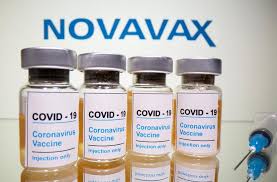





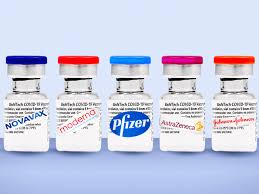


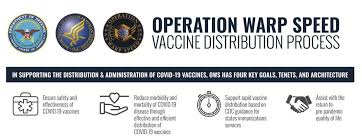

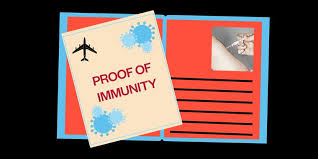




 RSS Feed
RSS Feed